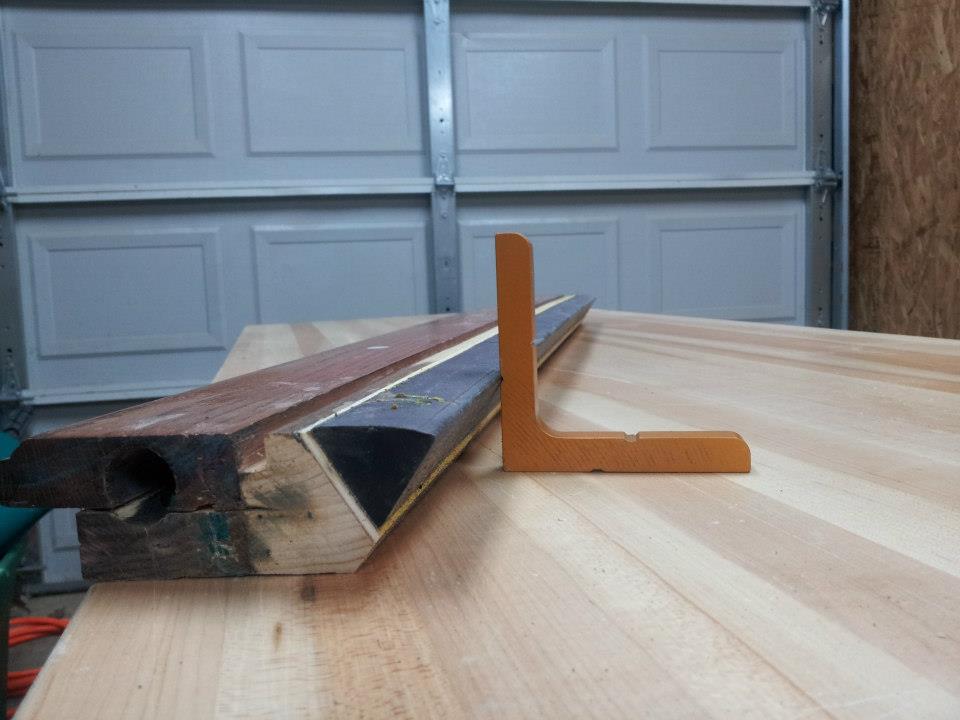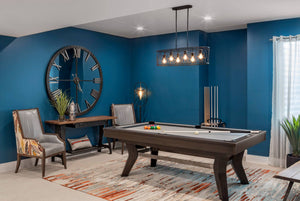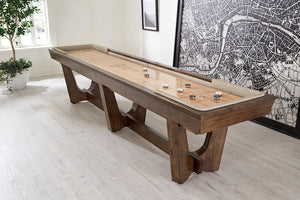
How to tell if your pool table rails are dead
Every week we receive calls from pool table owners in Maryland and Virginia who say they have dead rails on their pool table. This call is usually precipitated by a weekend of shooting pool for the first time in a while and someone noticing a bad rebound off of one or more rails during play. Here is a break down of what "dead" pool table rails really are and what it takes to fix the issue:
Problem #1: Loose Rail Bolts
Most home tables feature a three piece slate play surface and the pool table rails are bolted down to this part of the table during assembly. Over time these bolts can become loose from vibration or if the technician did not properly torque them down originally. The result is a rail or rails that seam "dead" when the ball hits them and does not come off with consistent speed. This is the first thing you should check and carefully tighten down if needed to solve the issue
Problem #2: Improper Installation of rail cloth or cushions
Pool table rail cloth (felt as it is commonly referred to) is installed by the pool table technician NOT the factory. That means if the technician over pulls the cloth it can result in the height of the cushion rubber being too low and resulting in a ball hop or inconstant ball rebound. Another common issue is tables with the incorrect cushions installed or cushions installed by hand without the proper height gauge, glue, training, or any real effort. 2nd hand tables or tables worked on by craigslist technicians often have this issue and the only solution is to have the work redone by a factory certified pool table mechanic.
Problem #3: Low quality cushion rubber
Not every pool table manufacturer uses high quality cushion rubber, in fact most companies have zero guarantee on the rubber after it leaves the factory. It is not uncommon for tables from companies like American Heritage to need new cushion rubber in 5-10 years even when never played on. Not to pick on American Heritage exclusively but they are the most notorious for this issue. Replacing the rubber with OEM cushions is not going to fix this issue, the table will need new cushion rubber from a verified manufacturer with a guarantee on the rubber compound. Always bounce a ball and play a bit on a table before buying!
Problem #4: Degraded Cushion Rubber Compound
No matter what every cushion will go bad eventually resulting in a piece of rubber that lacks "action" when the ball hits it. You can feel bad cushion rubber because it does not spring back when pressed firmly, it is either spongy or rock hard. This occurs after 25+ years or longer on good quality cushions depending on how much it is played and environmental issues. Having a heat vent above the table, pellet stove nearby, direct sunlight, not using a good quality dust cover, or a lack of humidity/temperature control will degrade the cushion rubber much faster.
Having "dead" pool table rails is very frustrating and you can expect to spend $750 to $1,500 to get new rails and cloth installed on your pool table depending on the type of pool table and the quality of the parts used. This can be a very good investment if the wood components and slate on the pool table are in excellent condition as the cost for a new table of reasonable quality installed is around $3,000.
We always recommend finding a company that is manufacturer certified to work on the brand of table you own and discuss your options. Specialty retailers who work on pool tables servicing and installing year round are always going to have incentive to get it right the first time, so make sure you get some references before hiring a supposed expert to fix your pool table.




Comments
Leave a comment